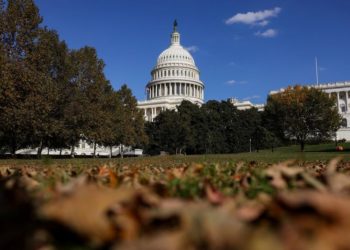Measles could become endemic in the United States if routine childhood vaccination rates continue to decline, with up to 51 million illnesses over a 25-year period, according to a new study.
Although the disease is endemic in some other countries – meaning it happens regularly within an area or community – it was declared eliminated in the US in 2000 because of vaccination efforts with the highly effective measles-mumps-rubella (MMR) vaccine.
Nearly 900 measles cases have been recorded in the US this year, with more than half of states reporting at least one case, according to a CNN tally using data from state health departments and the US Centers for Disease Control and Prevention. Most of the cases have been linked with an outbreak centered on an area of West Texas with a large unvaccinated population.
The new model, published Thursday in the journal JAMA, looks at the potential spread of the disease in the US over 25 years based on different vaccination levels calculated using data from 2004-23.
The researchers – from Stanford, Baylor, Rice and Texas A&M universities – estimate current state-by-state vaccination coverage for measles at 87.7% to 95.6%.
Because measles is so contagious, experts say the only way to prevent outbreaks is if at least 95% of a community has received two doses of the MMR vaccine. After this rate was maintained for a decade, though, coverage dipped during the Covid-19 pandemic and has yet to recover. The measles vaccination rate fell to 92.7% for kindergartners in the 2023-24 school year, according to data from the CDC.
At current vaccination rates, the model predicts that the disease would become endemic in the US within 25 years.
If the vaccination rate declines 10%, the US would see 11.1 million cases of measles over this period.
If current trends were reversed and there was a 5% increase in the number of people getting the MMR vaccine, however, there would be only 5,800 measles cases over 25 years.
The model showed that other vaccine-preventable diseases shouldn’t become endemic in the US at current levels of vaccination. If, however, routine childhood vaccination falls 50%, it predicts 51.2 million measles cases over a 25-year period, 9.9 million cases of rubella, 4.3 million cases of poliomyelitis and 197 cases of diphtheria. With such a steep decline in vaccinations, these diseases would cause 10.3 million hospitalizations and 159,000 deaths.
“These findings support the need to continue routine childhood vaccination at high coverage to prevent resurgence of vaccine-preventable infectious diseases in the US,” the researchers wrote.
One of the limitations of the study is that it doesn’t take into account that vaccination rates can fluctuate from community to community. Essentially, each state gets its own bucket, noted Dr. Mujeeb Basit, a modeling expert on disease spread who wasn’t involved with the new research.
“But the problem with that is, you’re comparing Texas to a smaller state like Rhode Island. So it’s not a homogenous distribution by size, so the accuracy of the numbers will fluctuate,” said Basit, a professor at UT Southwestern Medical Center in Dallas.
But he said the issue is computationally difficult, and the researchers took a “really nice approach.”
Research like this is important, he said, because it shows clearly that if vaccination trends continue, the US could experience continuous measles outbreaks that would have a cascading effect on the health system.
“Hopefully, it will get people to think,” he said – and to act, getting protection through vaccination.
For more CNN news and newsletters create an account at CNN.com
The post US may have millions more measles cases over next 25 years if childhood vaccination rates continue to decline, study says appeared first on CNN.




